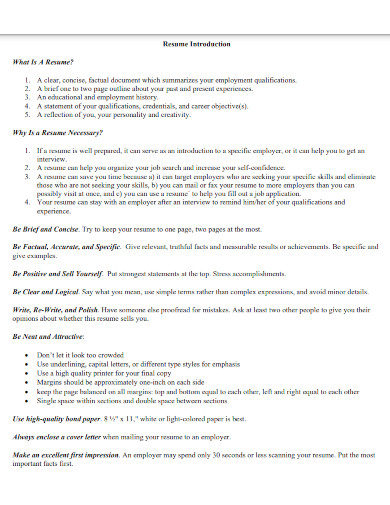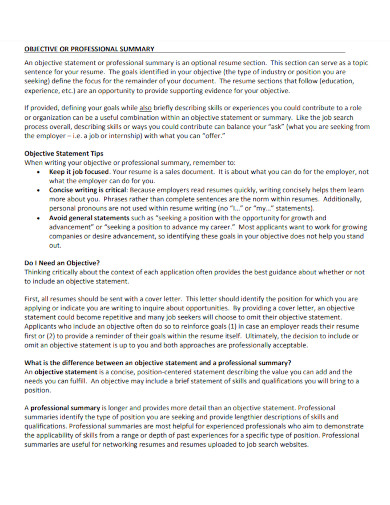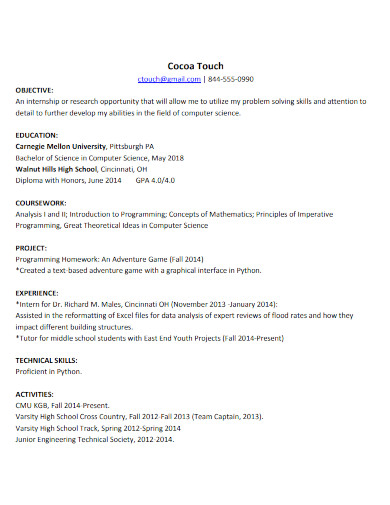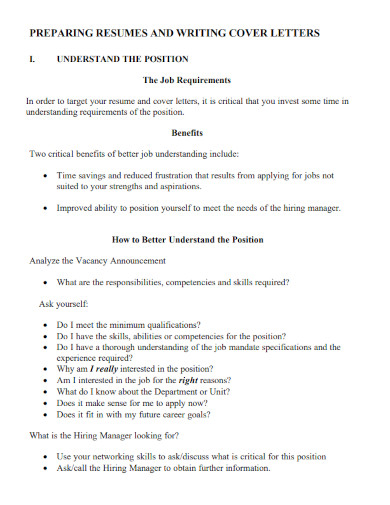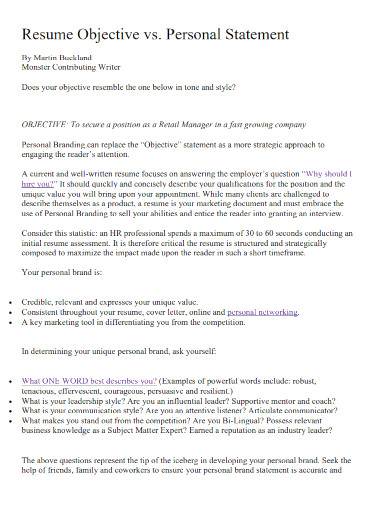A resume is a document submitted by an individual for a job application to a particular company or organization. This document summarizes the applicant’s overall career with the use of bullet points and basic statements. A resume’s opening statement is a concise paragraph that gives the employer or hiring manager an idea of your skills and other abilities you can offer to them as well as the reason why you are the best candidate fit for the job. Resume introductions also enable the applicant to create a positive first impression on their potential employer.
5+ Resume Intro Samples
1. Resume Introduction
2. Resume Intro Tips
3. Professional Resume Intro
4. School Resume Intro Sample
5. Preparing Resume Intro Sample
6. Resume Objective Personal Statement
What is a Resume Intro?
A resume introduction is a clear and brief paragraph that contains your personal interest and experiences with the hiring manager. It is also an effective way to clarify the abilities or skills you can offer the company. The opening statement of your resume template is like advertising yourself and giving your potential employer a quick glance at what they can expect from you. Your resume introduction is also your professional summary that highlights the skills, experience, and qualities relevant to the position you are applying for.
How to Create a Resume Introduction
When the hiring manager opened your resume, the introduction will be their first point of contact and serves as your first impression to them. This paragraph commonly consists of three sentences with specific metrics like your years of work experience or educational attainment as well as your most impressive achievements. The resume introduction is written at the beginning of your resume and below your contact information. It also contains your professional summary, therefore it will be the first thing that hiring managers will look for in your application.
Step 1: Learn More About the Job Description
One of the most important things to do before applying or resume writing is to study the job description so you can understand the main requirements and the job’s roles and responsibilities. By doing this, you will be able to determine what work experiences and skills you can highlight in your summary.
Step 2: Write a Compelling First Sentence
An effective opening sentence will attract the attention of the reader. You can use verbs in your resume introduction to making it more engaging and powerful like “organized” or “managed”. This will differentiate you from other job applicants and grab the hiring manager’s interest.
Step 3: Write Relevant Skills and Experiences
After the opening statement is the elaboration of your skills, past work experiences, and qualities related to the available position you are aiming for. You can include specific expertise like industry or type of work as well as relevant accomplishments like awards you have received and completed projects.
Step 4: Make Sure to Proofread Your Resume
After writing your resume introduction, make sure to take enough time to proofread your composition by checking your grammar, punctuation, and spelling. You can read it aloud to make sure that it sounds natural or ask a friend to read it over for you and give you feedback.
FAQs
What are the different types of resume introduction paragraphs?
A resume introduction has two types of paragraphs which are the resume summary statement which is for applicants with several years of working experience in their respective fields and the resume objective statement which is used by new job applicants or applicants who are making a career change.
What are the key features of a resume introduction?
A resume introduction’s key features provide a description of the applicant’s desired position, past experiences, achievements, first and secondary passion, educational background, affiliation, and positive office and personal characteristics.
What comes after the resume introduction?
After your resume introduction, you have to elaborate on the features you have mentioned. Provide supporting data on your statements by writing detailed information about your education, achievements, job experiences, and personal interests.
A resume introduction is the first paragraph in the applicant’s resume which also serves as their first impression of the employer. Once a recruiter opens a resume, the introduction paragraph will be their first point of contact. Therefore, it must contain essential information about the applicant such as their educational background, skills, years of related working experience, and achievements.
Related Posts
Sample Security Guard Resume Templates
Sample Academic CV Templates
Sample Nursing CV Templates
Sample Warehouse Worker Resume Templates
Sample Nurse CV Templates
Sample Resume For College Student
Resume Summary Templates
Medical Student CV Samples & Templates
Fresher Resume Examples
Resume Profile Samples & Templates
Sample High School CV Templates
Sample Resume Templates
Sample Teaching CV Templates
Teacher Resume Templates
FREE 15+ Director CV Samples in MS Word | Pages | PSD | Publisher | PDF
